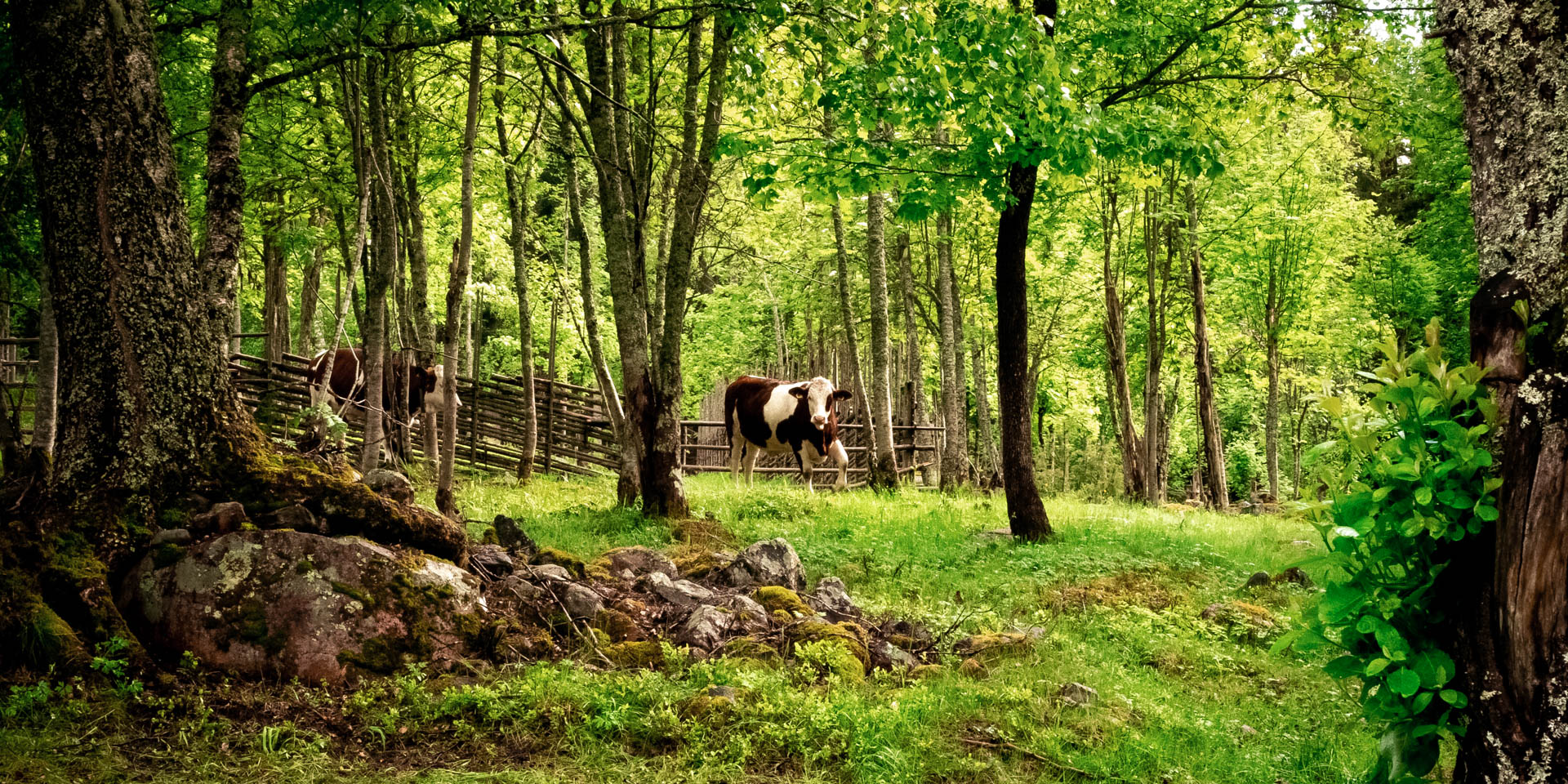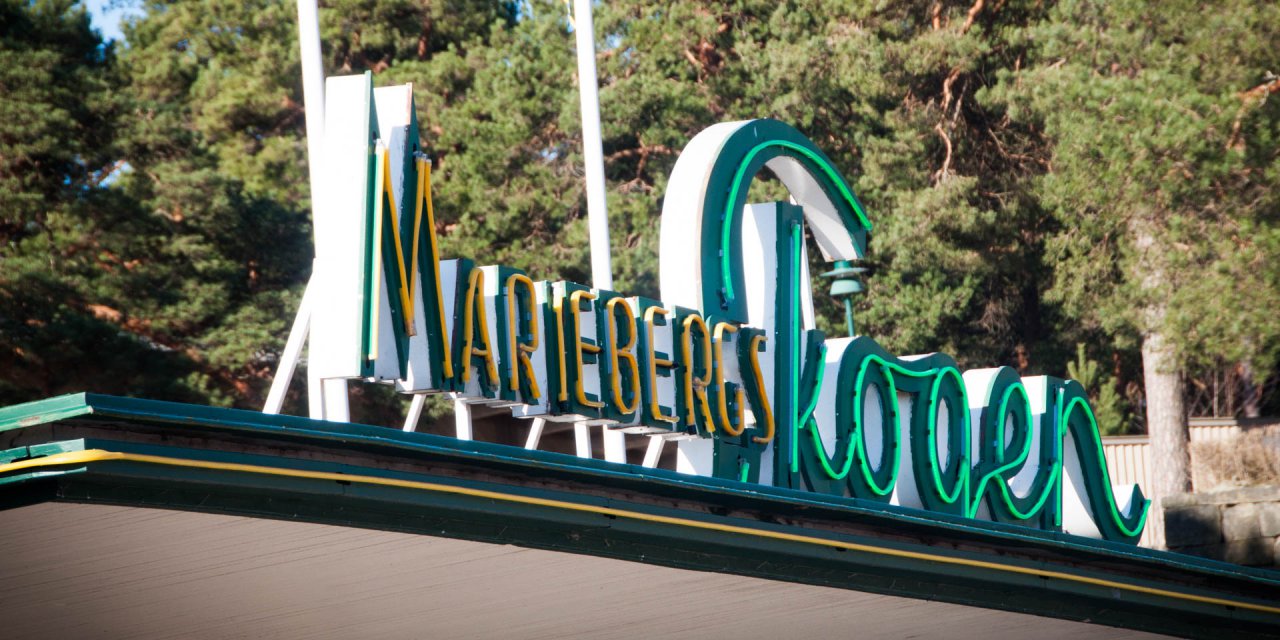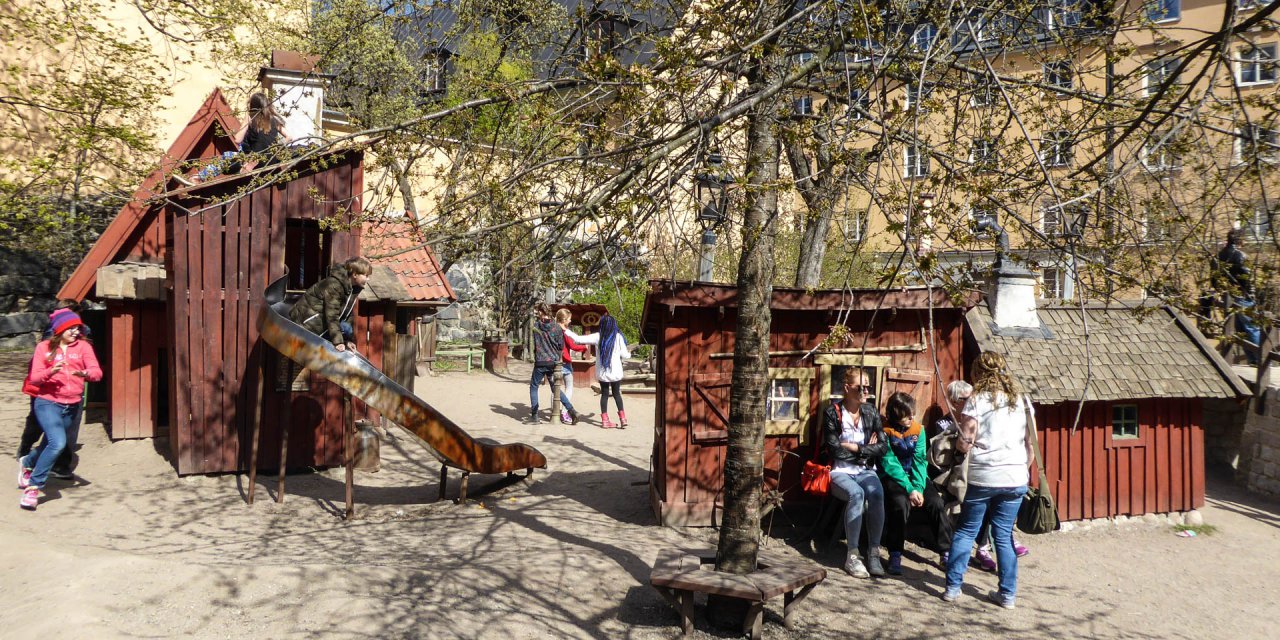

Källslätten
Historical gardens near Falun
Källslätten in the south-west of Falu Kommun, about ten kilometres west of Falun, represents the historic gardens and cultural landscape around the remains of an ancient miners' farm.
The extensive grounds of the former Källslätten miner's farm stretch across a clearing in the middle of dense coniferous forests and, from a bird's eye view, look like a bright island in a sea of dark treetops. From the 17th century onwards, Källslätten was one of the estates in the area that leaders of the old copper mine Falu Gruva created for themselves as residences befitting their status, far outside the town of Falun, which was permanently shrouded in smoke from the copper smelters of the time.
Only the foundation walls of the former residential buildings remain today, and of the other farm buildings, an old earth cellar and a few small barns have been preserved. Not to forget a still bubbling spring under a mighty maple tree, which used to supply the farm and garden with fresh water. The farm grounds are situated on a slope that has been divided into five large terraces. With a little imagination, you can still make out the remains of the terraces and former fountains, despite the overgrown berry bushes, and guess the shape of the garden, once laid out in the style of the French Baroque, which extended along an axis of symmetry from the main house to the old orchard.
Inside the orchard, among the 40 or so very old apple and pear trees on the third terrace, there is an ancient mother plant of Sweden's oldest apple variety, the Gubbäpple. Its the apple variety owes its name, which means "old man's apple", to its flesh, which is so tender and crumbly that even an old man without teeth can enjoy the apples without any problems.
In addition to the orchard Källslätten also presents itself as a historical cultural landscape from the 17th century with small fields, heaps of pebbles, traditional wooden fences and hay meadows.In particular, the regularly mown hay meadows have produced an extremely species-rich flora, in which moonwort (Botrychium lunaria), field gentian (Gentianella campestris) and pyramidal bugle (Ajuga pyramidalis) occur, as well as medicinal herbs like masterwort (Peucedanum ostruthium) und comfrey (Symphytum officinale).



